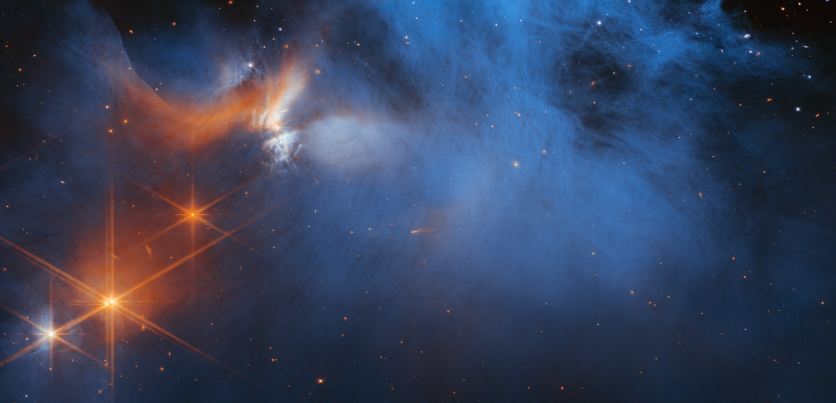An extensive inventory of the deepest, coldest ices ever observed in a molecular cloud has just been compiled by an international team of astronomers using NASA's James Webb Space Telescope.
The team recognized frozen forms of various compounds, including carbonyl sulfide, ammonia, and methane, as well as the most basic complex organic molecule, methanol, and simple ices such as water.
NASA said that this is the most thorough inventory of the frozen components used to create future stars and planets before they are heated during the birth of newborn stars.

Building Blocks of Life
According to Melissa McClure, the study's primary author, these fresh findings offer insights into the early, dark chemical phase of the production of ice on interstellar dust grains that would eventually evolve into centimeter-sized pebbles from which planets develop in disks.
"These observations open a new window on the formation pathways for the simple and complex molecules that are needed to make the building blocks of life," McClure said in a press release statement.
The scientists also discovered evidence for molecules more complicated than methanol. NASA said that this establishes for the first time that complex molecules originate in the frigid depths of molecular clouds before the birth of stars, even if they were unable to definitively attribute these signals to particular molecules.
The researchers were able to determine the amount of sulfur buried in icy pre-stellar dust grains for the first time by spotting the sulfur-bearing ice carbonyl sulfide. Despite being more than previously observed, the amount found is still less than what should be detected overall given the cloud's density.
This also applies to the other CHONS (carbon, hydrogen, oxygen, nitrogen, and sulfur) components. Understanding whether these components are buried in ice, soot-like substances, or rocks is a major difficulty for astronomers.
The proportion of these elements that wind up in exoplanet atmospheres and interiors depends on the amount of CHONS in each type of material, as per NASA.
Read Also : NASA's James Webb Space Telescope Zooms in on Mars for the First Time, Capturing Stiking Martian Details!
Examining Starlight
The chemical makeup of the ices was discovered by examining how starlight from outside the molecular cloud was captured by icy molecules inside the cloud at certain infrared wavelengths observable to Webb.
The chemical fingerprints left behind by this process, identified as absorption lines, can be used to identify the ices that are found in the molecular cloud by comparing them to laboratory data.
The team focused on ices buried in an area of the Chamaeleon I molecular cloud that was especially cold, dense, and challenging to examine. This region is around 500 light-years away from Earth and is presently generating dozens of young stars.
The study is a part of one of Webb's 13 Early Release Science programs, the Ice Age Project. The results of this research were published in Nature Astronomy.
Related Article : [LOOK] NASA James Webb Space Telescope's Largest Image of the Universe to Date - Made Out of 690 Individual Frames!





